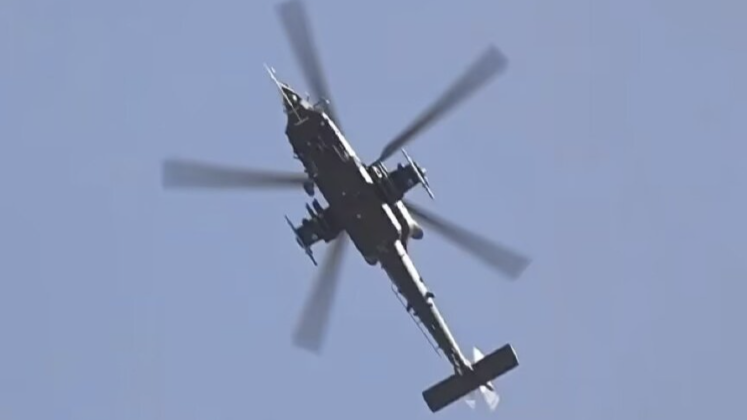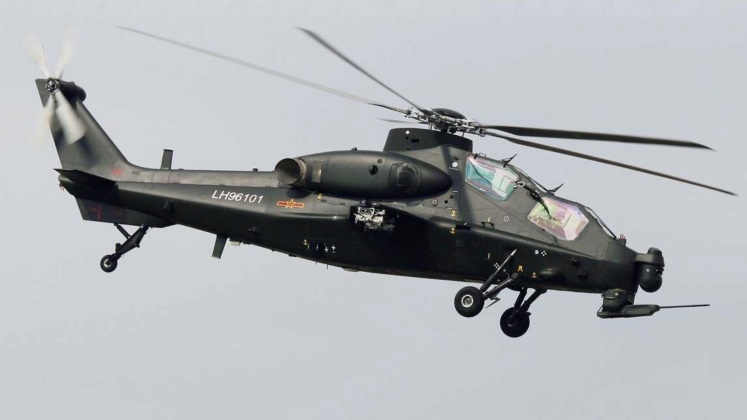News
China Unveils First Ever Heavy Attack Helicopter: What Makes It a Major Industry Milestone
The first images of China’s first ever class of heavy attack helicopter, the designation of which remains unknown, were released on March 21, with the new aircraft expected to provide a capability long sought by the People’s Liberation Army (PLA) Ground Forces. Chinese aviation emerged in the 2010s as a world leader in a growing number of areas, today having the largest military transport in production worldwide, the widest range of stealth drones, the world’s only air breathing hypersonic aircraft and one of the world’s two leading fifth generation fighters. Its helicopter fleet has long been expected to be brought up to a similarly leading standard with a new platform. Attack helicopters have notably not been a priority for the PLA in the past, as since the early 1990s priority funding has been allocated to waging a war beyond the country’s east coast requiring major investments in aerial and naval assets. Nevertheless, the new attack helicopter has the potential to fill a number of important roles in the fleet including providing key support to protection of Chinese territorial claims in the South China Sea as well as preparations for contingencies in the Taiwan Strait.

The new attack helicopter design appears to be loosely based on that of the Z-20 transport, which first joined the fleet in 2019, albeit with a much slimmer airframe and a tandem twin seat configuration. The helicopter’s tail section appears almost identical to that of the Z-20 with a similar un-swept horizontal stabiliser, while its stub wings also have a very similar format. Some unconfirmed reports indicate that the new helicopter uses the same powerplant as the Z-20 or a close derivative of it. Engine exhausts are directed upwards to reduce the infrared signature, as infrared guided missiles are a leading threat to attack helicopters that are particularly difficult to counter due to their lack of radar signatures. Deriving dedicated attack helicopters from large transport helicopters is far from unprecedented, with notable precedents including the development of the American Black Hawk into the S-71 attack helicopter before the program’ cancellation, and the development of the AH-1 Cobra from the UH-1 Iroquois utility helicopter.

China’s sole prior class of dedicated attack helicopter, the medium weight Z-10, entered service in late 2012, and has been considered a major success with incrementally improving capabilities and successful competition in a tender for the Pakistan Army, which previously relied solely on Western helicopters. Heavier attack helicopters, however, can carry significant better armour protection and higher weapons payloads, including larger electronic warfare suits, which allows them to be used for a range of missions that would be considered too dangerous for lighter aircraft. To provide a heavier complement to the Z-10, it was previously speculated that the PLA could purchase Russian attack helicopter classes, most likely the Ka-52, for both ground based operations and for operations from its growing fleet of Type 075 Class helicopter carriers. The Type 075 is one of the largest ship designs of its kind in the world at an estimated 35,000 tons displacement. Three are currently in service with a fourth having been launched in December 2023 set to join them in the near future, with each expected to be capable of operating more than 15 heavy attack helicopters. The development of the first Chinese heavy attack helicopter is a major milestone, with the new design expected to be improved rapidly and eventually have multiple successors. It closes what was effectively Russia’s last opportunity to sell combat aircraft to China, which in the immediate post Cold War years absorbed close to half the country’s arms exports, but has seen its aviation industry increasingly surpass that of its neighbour across multiple areas.












